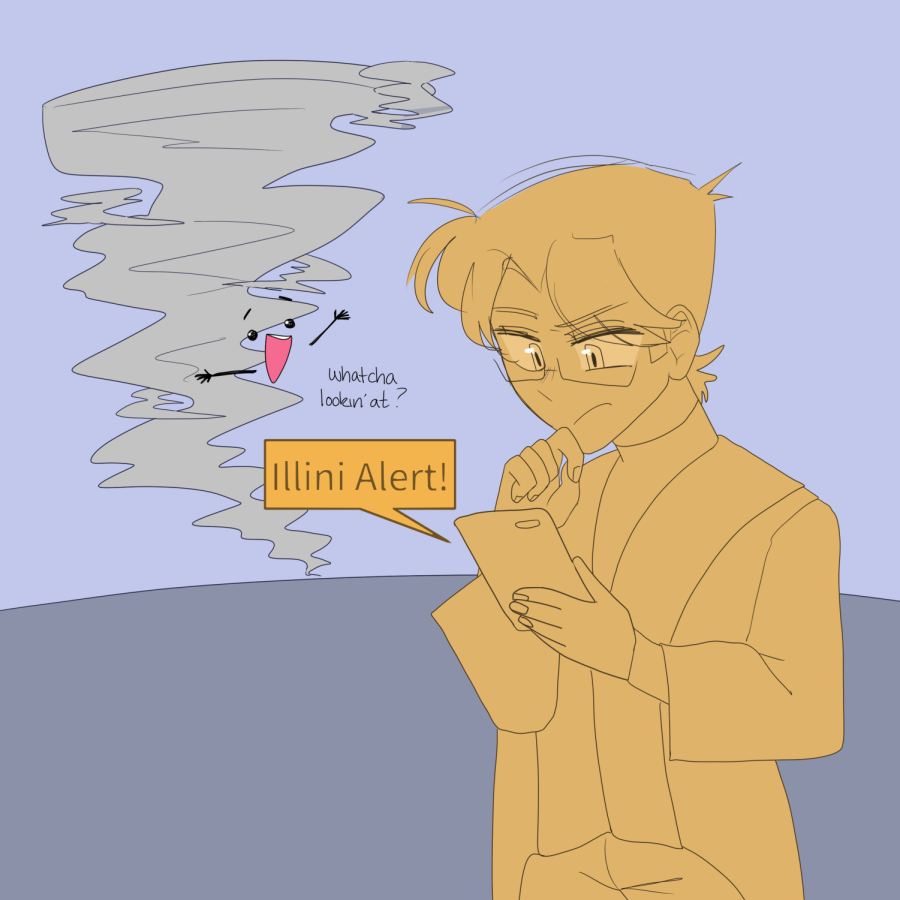How prepared is the University for natural disasters?
March 6, 2023
It was a quiet Monday morning, every student was dreading the end of the weekend and struggling to wake up for their 9 a.m. courses. The color gray softly took over the sky, and trees struggled to stay on their feet. Then, a tornado was spotted.
On Feb. 27, at 8:55 a.m., an Illini-Alert was sent out that said a tornado emergency was underway.
The tornado didn’t leave a lot of damage. However, a tornado watch was in effect until 3 p.m. Following this, a question arose: How well prepared is the University of Illinois at Urbana-Champaign for natural disasters?
Jagriti Sidharth Jain, sophomore in Engineering, said she thinks students should be given more information about the protocol to follow during a natural disaster.
“I feel like the University is pretty prepared, but they haven’t given the students enough information as to what needs to be done,” Jain said. “When the warning was issued, I was outside waiting for the bus and I didn’t even realize that there was going to be a tornado. Later, I realized it was a pretty serious thing.”
Get The Daily Illini in your inbox!
Nirali Dhote, freshman in Engineering, talked about what happened in her class when the tornadoes hit on Monday.
“My TA didn’t really care,” Dhote said. “I know other people were sent to the basement. Even when the alarm kept going off, we just kept working.”
Brian Brauer, executive director of Emergency Management of the University’s Division of Public Safety, explained how the University prepares for natural disasters.
“We have three levels of preparedness. The top level is the University level — the Illini-Alerts and notifications like that,” Brauer said. “We have a solid system because we as a university are 100% in control of that. We have a very robust system for getting that information out telling people to stay away from the area quickly.”
Brauer said the next level is less secure.
“The next level is the department level, and I would give us a B,” Brauer said. “Because at the department level, what is required is we help each individual department create the building emergency action plan.”
Brauer said the third level is the toughest one to manage.
“The weakest layer that I think we have is the individual layer … Individual preparedness is where this system could easily break down.” Brauer said.
Brauer said it is common for people to underestimate the seriousness of calamity.
“But I’m optimistic about it,” Brauer said. “Most of our buildings have building managers that take that responsibility of making sure that evacuation routes are posted, making sure that people know where the closest tornado refuge area is.”
Another concern Brauer expressed is about the accessibility of the evacuation protocols in place. People with disabilities may have trouble following current evacuation plans.
“We’re partnered with Facilities & Services. In a newer building, we have designed what are called areas of rescue assistance,” Brauer said. “So, we make sure that there is a place in every stairwell where someone who can’t self-evacuate can go and be separated.”







